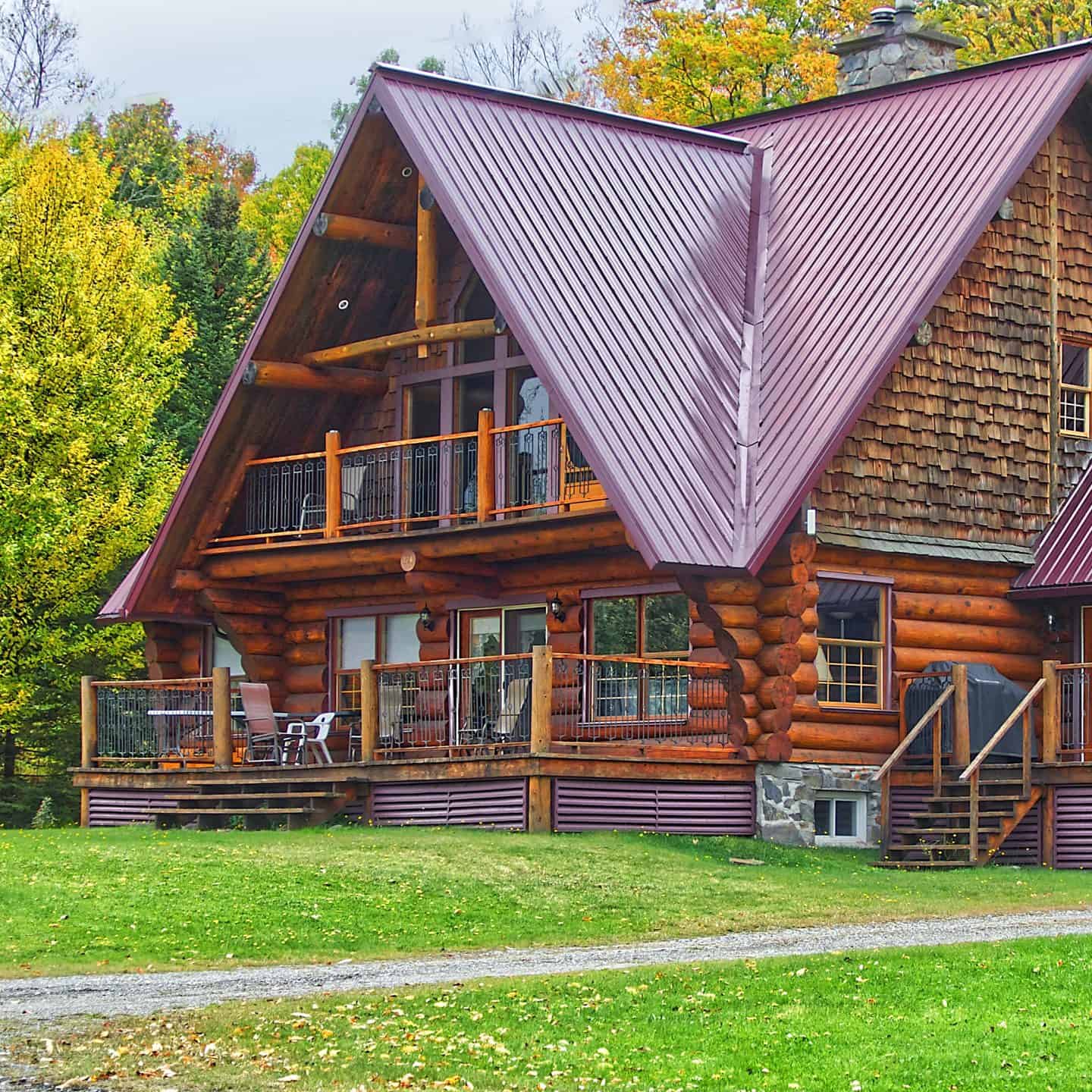
For first time log home owners, discovering the right ways to care for your log home can be tricky.
You may notice a crack in a log and wonder if you should be concerned. Or perhaps you’ve noticed that some of your logs are slightly discolored but don’t know why.
Over the course of a year, seemingly small changes to our log homes occur. And this is part of the beauty of a log home! They are made of wood, a material that is natural and ever-changing.
It’s normal for our log homes to change from year to year. Fluctuating temperatures and weather have an impact on our logs.
But these changes that our homes experience are the reason why we need a yearly checklist like the one below. Seemingly small issues that happen in your log home — if left unchecked — can result in big problems.
7 Things to Do Each Year to Care for Your Log Home
1. Fill Checks in Your Logs
“Checks” are the cracks that naturally occur in logs as they respond to structural pressures or changes in our log homes. If left unchecked (pun intended!) they can grow in size and allow moisture, cold air, or damaging insects into the log.
What to do:
Keep an eye out for checks that are larger than ¼ inch. If you have large checks, fill them with caulk (like this one: Conceal Textured Caulking) and, if needed, insert a backer rod (like these) beneath the caulk.
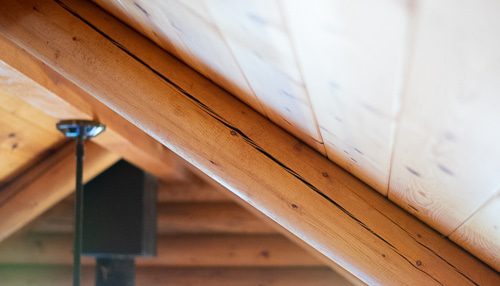
2. Maintain Your Log Stain
Most stains on the exterior of your home will last a minimum of 3 years; but it’s a good habit to check your logs yearly for wear on your strain. Heavy UV rays or rain/snow can cause areas of your log stain to degrade. The easiest way to spot this is if logs have become discolored. Your stain protects your logs, so when it starts to wear it’s important to repair it.
What to do:
If large patches of your logs have become discolored, it may be time for a re-stain. We recommend Sashco’s Capture (available here) as a long-lasting, natural-looking stain.
3. Look at High-Moisture Areas for Water Damage
There are areas around your log home that are more susceptible to water damage. These include places where: drainage occurs, heavy rain hits your logs, or water collects on a porch or deck. Over time, if not properly protected, high moisture areas cause logs to rot. Rotting logs become a destination for mildew, mold, and insects.
What to do:
Prevention is key. Properly sealing your home and using drainage to keep water away from your logs is best. If you already have signs of water damage, consider re-sealing your logs (in mild cases you can touch them up with a top coat like Sashco’s Cascade). Then find ways to keep water away from in the future.
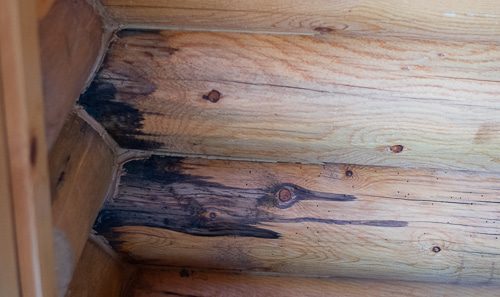
4. Clean Your Gutters
Cleaning your gutters will go a long way in preventing moisture damage to your home. Each fall — as part of your Log Home Fall Maintenance Checklist — clean your gutters to prevent ice dams in the winter and flooding in the spring.
What to do:
Remove all debris from your gutters and inspect them for breaks. Gutters are one of the greatest culprits for moisture damage to logs and keeping them clean will help prevent this.
5. Fill Small Insect Holes
Wood-boring insects are the enemies of log homes. Termites, carpenter ants, and carpenter bees love your logs as much as you do. If you spot small, round holes in your logs you may have some of these unwelcome bugs in your home.
What to do:
Fill insect holes that are ¼” or greater with caulk to prevent further damage. If you still see signs of bugs, use an insecticide like BEE-Gone, specially formulated for wood-boring insects (there’s more types of these bugs than you would think!).
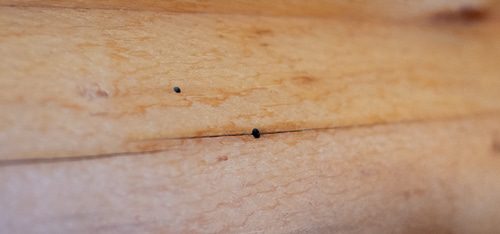
6. Clean Your Logs
The outside of your log home collects a thin layer of dirt, pollen, dust, etc. If left uncleaned, this layer weakens your stain and traps moisture.
What to do:
Pressure washing is most popular for cleaning logs. For a full guide on how to properly clean your logs plus exact product recommendations: read here.
7. Schedule a Professional
If available, schedule a local log home professional to give your home a top to bottom inspection once a year. These professionals are trained to spot issues before they arise, from small gaps in your logs to large structural problems.
What to do:
Depending on where you live, there may be local log home specialists. If not, find experts online who can provide trustworthy advice. There are log home experts — like those at Schroeder Log Home Supply — who have been in business for 30+ years and have seen every scenario possible with log homes!
Learning About Log Home Maintenance
As an owner of a log home, it’s important to constantly be learning how best to care for our homes. The above list is an overview of things that you can do yearly, but proper care goes farther than just these few items.
If you’re interested in learning more about log home maintenance, I strongly recommend: The Log Home Maintenance Guide: A Field Guide for Identifying, Preventing and Solving Problems.
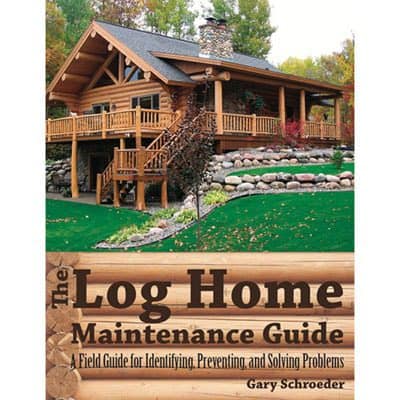
The informations, scenarios, and photo examples in this book are invaluable in caring for our log homes. I read this book for the first time this year and it changed the way we see and care for our cabin!
Grab a copy here: Buy Now.
This post is sponsored by Schroeder Log Home Supply, www.loghelp.com.
ABOUT SCHROEDER LOG HOME SUPPLY
Schroeder Log Home Supply has been serving homeowners for over 3 decades. They do more than offer the best products — they have the expertise and support to help you make the best choices for your log home. They believe that log homes leave a legacy, and their products help you take care of yours.
Get in touch with them at: https://www.loghelp.com/.

Leave a Reply